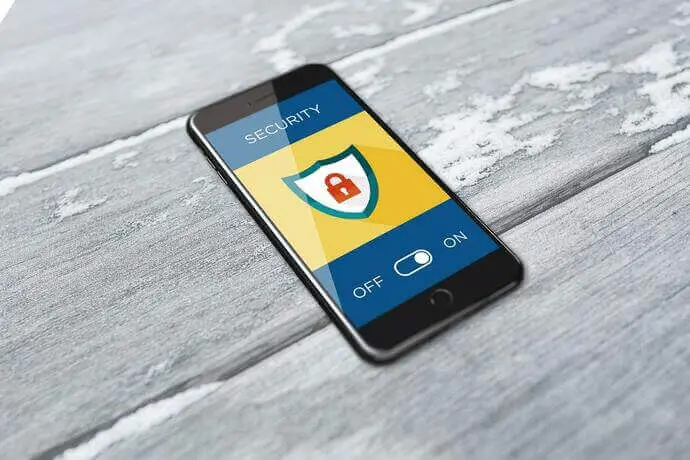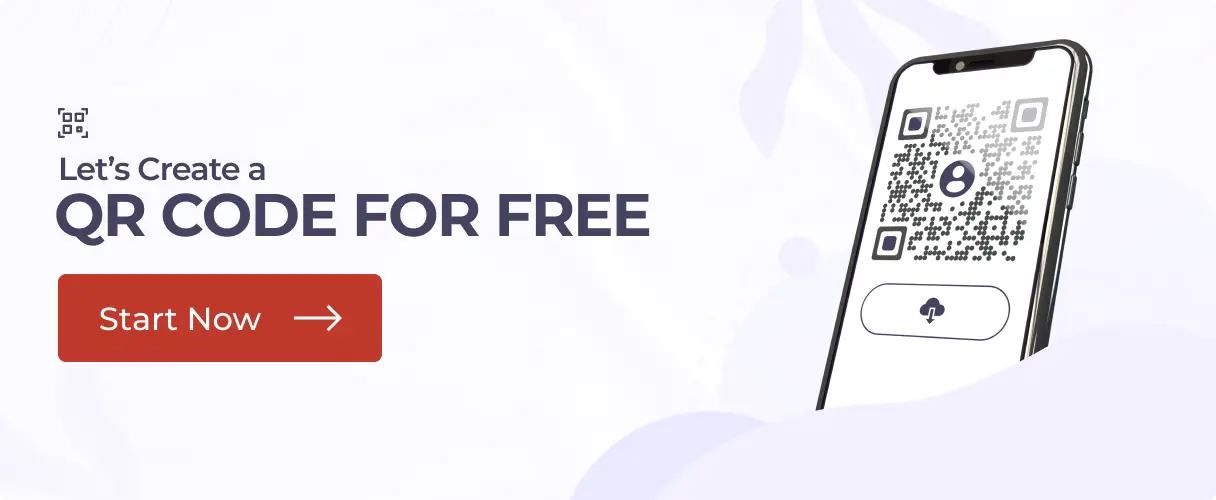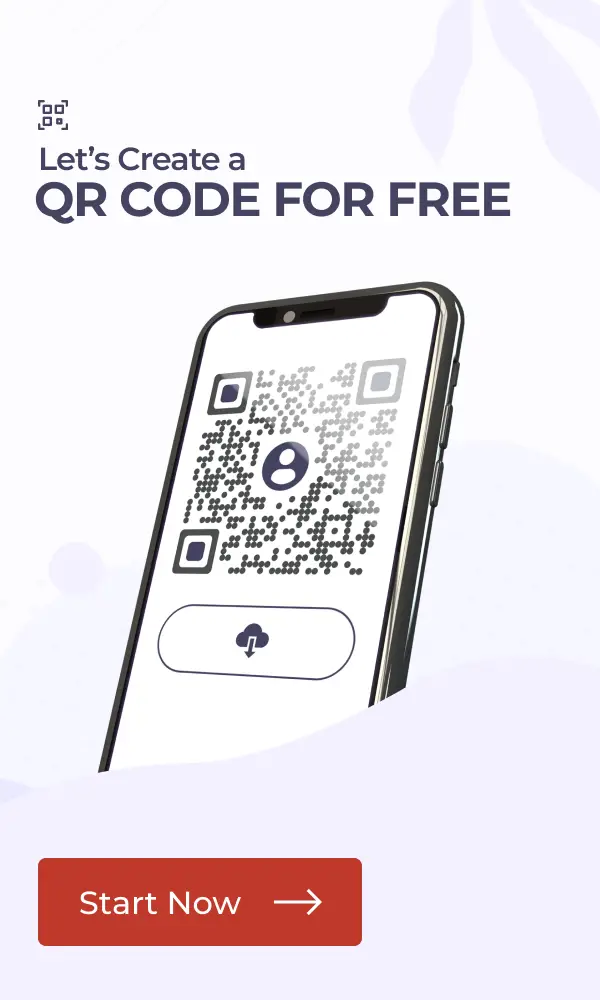In a nutshell: QR Codes are everywhere, but using them safely is key. Choose a secure QR Code generator with HTTPS, GDPR/ISO certifications, password protection, and multi-factor authentication. Avoid shady tools, scan only trusted codes, and keep your device updated. Whether creating QR Codes one by one, in bulk, or via API, tools like Scanova offer enterprise-grade security, encrypted links, and privacy-friendly analytics to keep your data and brand safe.
QR Codes are a well-known technology today. From pharmaceuticals and marketing to product packaging and inventory management, they are being used everywhere.
In fact, ever since the pandemic hit the world, their adoption has increased. Why? Because of their impressive contactless nature.
In addition, an increase in smartphone penetration and access to high-speed internet has further fueled this growth.
The global smartphone penetration went from 59.01% in 2017 to 78.05% in 2020. And access to high-speed mobile internet increased from 48.8% in 2014 to 62.5% in Jan 2022.
So you’re planning on using QR Codes. But like any other technology, you will use them only when they are safe.
That means whether the data you add to QR Codes would be in safe hands or not. Are they resistant to being hacked?
Since not a lot of information about QR Code safety is available out there, you may have many safety concerns in your mind.
In this article, we will discuss how to find a safe QR Code generator for your needs. In addition, we also have a detailed guide on QR Code related malpractices that you be aware of.
To get started, here’s an exhaustive list of parameters you must consider while looking for a safe QR Code generator:
A. Must-have features in a safe QR Code Generator
1. Data security and user privacy
Whenever you use a tool or software, you share some personal data. And ensuring that your data is in safe hands is important. Moreover, in case you use this tool to collect information about your clients, you’d want it to safeguard that too!
Hence, your QR Code generator must keep all the data safe, private, and secure.
So, see whether the QR Code generator you select is GDPR compliant and ISO 27001:2013 Certified. Not sure what it means?
The General Data Protection Regulation (GDPR) is a regulation on data protection and privacy. It ensures that the EU residents have control over how their personal data is stored and processed by organizations.
ISO 27001:2013 is a certification that signals that the organization has met quality standards for its information security management system. It ensures that the organization knows how to manage its data with utmost security.
A service provider with both these certifications is highly likely to be trustworthy. That’s because getting these is not an easy job. These certifications are only awarded after closely scrutinizing every process in an organization to ensure customer safety.
2. Authorized multi-user access
Need your team to help you handle the campaigns? The multi-user support feature is here for you.
This feature allows you to invite your teammates and other stakeholders to access and manage the QR Code account. You can control the level of access for each user. For example, you can assign them different roles such as Viewer, Manager, and Admin. Here’s what it means:
a. Viewer
Users with this level of access can view and export the campaign analytics. However, they can’t create or edit QR Codes.
b. Manager
Users with managerial access can view and edit QR Codes and also see the analytics. They can also do a lot more activities such as adding third-party integrations, creating QR Codes in bulk, etc.
c. Admin
An admin has almost every permission to manage the campaign. It could be QR Code generation, analytics and data monitoring, integrations, and many other advanced controls.
3. Availability of multi-factor authentication
Multi-factor authentication adds an extra layer of protection to your QR Code generation account. It ensures a higher level of security assurance than a password alone.
Here’s how it works—say you create an account with a QR Code generator, and you create a password to log in.
Somehow, your password gets stolen or leaked, and your account’s safety is now at risk. That means there can be data breaches and even unauthorized QR Code edits.
Multi-factor authentication ensures that no unauthorized user accesses your account. It does so by asking you to not only enter the password while logging in but also additional information. For example, OTP and push notifications.
Hence, even if someone gets hold of your password, they’ll not be able to log in to the account.
4. Custom URL and custom domain feature
Do you know QR Codes are of two types—static and dynamic? Static QR Codes store the data directly. So they are non-editable and non-trackable. That means you can’t edit the content encoded in the QR Code once generated.
On the other hand, dynamic QR Codes are both editable and trackable. They do not store the target data directly in them. They would rather store a redirecting URL that takes the end-users to the target data. This is called a redirecting URL, which is given by your service provider.
And you may want to remove the name of the QR Code service provider from the redirecting URL. To do that, you’ll have to use your own website domain or URL hash.
This will strengthen your brand-building effort as first thing end-users will see after scanning will be this branded URL. Also, it builds trust among the end-users. Why? Because when they see your domain name in the link, it becomes easier for them to trust it and click it open.
Also, branded links have up to 39% more click-throughs compared to generic short URLs.
To use this feature, you need a QR Code generator with custom domains and URLs. They will help you add your own brand name to the link. It will help customers identify that the QR Code belongs to your brand and isn’t illegitimate or unsafe.
In case your business doesn’t have a website, check to see if the domain offered by the QR Code Generator solution is secure.
5. Add password protection
Say you’re encoding confidential data in the QR Codes, such as bank statements. And you want only authorized personnel to see the encoded content.
This is where a QR Code generator with password protection can help you out. It helps protect sensitive information against unauthorized access.
Here’s how it works—once the end-user scans the QR Code, they will be prompted to enter the password. Only after entering the correct password will he be able to access the encoded content.
B. Safe QR Code scanning practices
Now you know a safe QR Code generator can offer you safe and secure services. But you should also be aware of the safest QR Code scanning practices. They will keep you away from harm’s way. Here are some of them:
1. Check the domain name
When scanning the QR Code, you generally see a short URL on your screen. Here, you need to check to see whether the domain name is familiar. This means whether it belongs to the same company/brand from the advertisements.
Keep in mind that some brands rely on the default domain provided by QR Code generators. So, always check the domain name before following through.
In case the brand name neither belongs to the advertiser nor a reliable QR Code generator, you must be wary of opening the link.
2. Avoid scanning random QR Codes on the internet
Imagine receiving a QR Code. Should you scan it? Definitely, not.
Simply scanning a random QR Code can lead you to a scam site. Or it could also give fraudsters unauthorized access to your smartphone in unwanted ways.
This is one of the most common QR Code frauds. In case you want to become familiar with all the common QR Code frauds and their solutions, here is a detailed guide to help you out.
3. Update to the latest OS
You scan a QR Code using your smartphone. Thus, it makes sense to always keep the smartphone’s operating system updated.
This ensures that the latest and most formidable security checks are on your smartphone. Hence, the probability of falling prey to security scams decreases.
C. How to create QR Codes
Now you know QR Codes are safe and secure. The next question: how to create one?
I. Create QR Codes one by one
If your use case doesn’t require hundreds or thousands of QR Codes, this is the right choice for you. This option offers you a wide range of QR Code categories to choose from. For example, Event QR Code, Website URL QR Code, Product QR Code, etc.
To create one, you simply need a QR Code generator. You can find various QR Code generators online. But comparing each result to find the safest one is a tedious process. For your convenience, here is a detailed comparison of the best QR Code generators available online. You can go through it to find the safest one for yourself.
Once finalized, you can go ahead and create your own first QR Code. To help you get started, here’s a step-by-step guide on it.
II. Create QR Codes in bulk
If your requirement is huge, you can go ahead with this option.
Here, you’d need a bulk QR Code generation service. It allows you to create up to 100,000 QR Codes in one go. Thus, it eliminates the need to generate QR Codes one by one.
Bulk QR Code generation service offers a variety of choices. For example, Website URL QR Codes, Simple Text QR Codes, Serial Code QR Codes, and VCard QR Codes.
To make use of it, you simply need to upload a data file in XLS, CSV, or XLSX formats. And this file needs to have all the data to be encoded in the QR codes. Once done, you just have to wait for the QR Codes to be generated and download them in a zip folder.
For more information, here is a detailed guide on how to generate QR Codes in bulk.
III. Create QR Codes programmatically
If you want to integrate QR code generation into your own information system, QR Code API can help you do it.
It allows you to generate QR Codes programmatically in real-time. Hence, there is no manual intervention required to create the QR Codes.
B. What makes a QR Code Generator safe and secure?
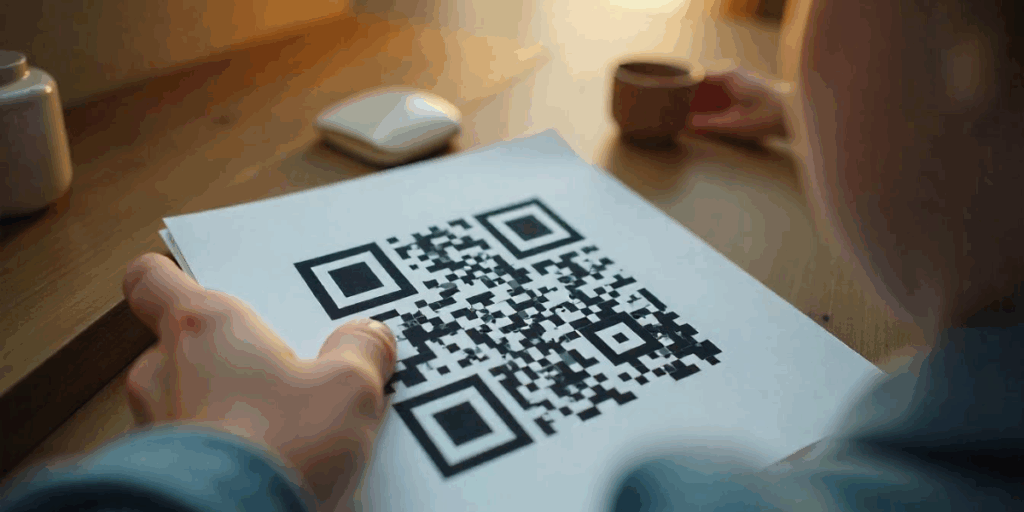
Choosing the right QR Code generator isn’t just about features—it’s about protecting your data, your users, and your brand. Here are the key indicators of a secure and trustworthy QR Code generator:
1. Uses HTTPS encryption (SSL/TLS)
The platform should operate on a secure HTTPS connection, ensuring that any data you submit, such as URLs, contact details, or payment links, is encrypted during transmission and cannot be intercepted by malicious actors.
2. Compliant with global data privacy regulations
Look for tools that follow established privacy standards like GDPR (EU), CCPA (California), or equivalent frameworks. This ensures they handle your data ethically, provide opt-in consent, and offer options for data deletion or export upon request.
3. No unnecessary data collection or storage
A secure QR Code generator only asks for essential information and avoids collecting personally identifiable data unless absolutely necessary. They also provide clear privacy policies outlining what’s collected and why.
4. Hosted on secure and reliable servers
The backend infrastructure should be hosted on trusted platforms like AWS, Google Cloud, or Azure. These services offer built-in security protocols such as DDoS protection, firewalls, regular patches, and threat detection to minimize the risk of breaches.
5. Malware and phishing link protection
Reputable platforms automatically scan links to ensure QR Codes don’t direct users to malicious or suspicious websites. This protects both you and your users from potential scams or data theft.
6. Password protection and user access controls
Advanced generators offer features like password-protected QR Codes and role-based access control. This ensures that only authorized users can edit or manage the QR Codes, reducing the risk of misuse.
7. Real-time monitoring and scan analytics
Secure platforms provide dashboards with insights on QR Code scans, such as time, location, device type, and frequency. This helps identify suspicious spikes or usage patterns that may indicate abuse or cloning.
8. Editable dynamic QR Codes with audit logs
For dynamic QR Codes, ensure that edits can only be made through a secure account, preferably with multi-factor authentication. Platforms that log all activity give you a clear audit trail for accountability.
9. No hidden redirects or unwanted branding
Trusted platforms don’t sneak in affiliate redirects, ads, or third-party branding. They give you full control over what the QR Code points to and how it appears.
10. Transparent reputation and user reviews
Check third-party reviews, case studies, or testimonials to confirm that other users have had a positive experience. A reputable tool will have an active customer base, clear contact information, and reliable support channels.
C. How to spot unsafe or malicious QR Code tools?
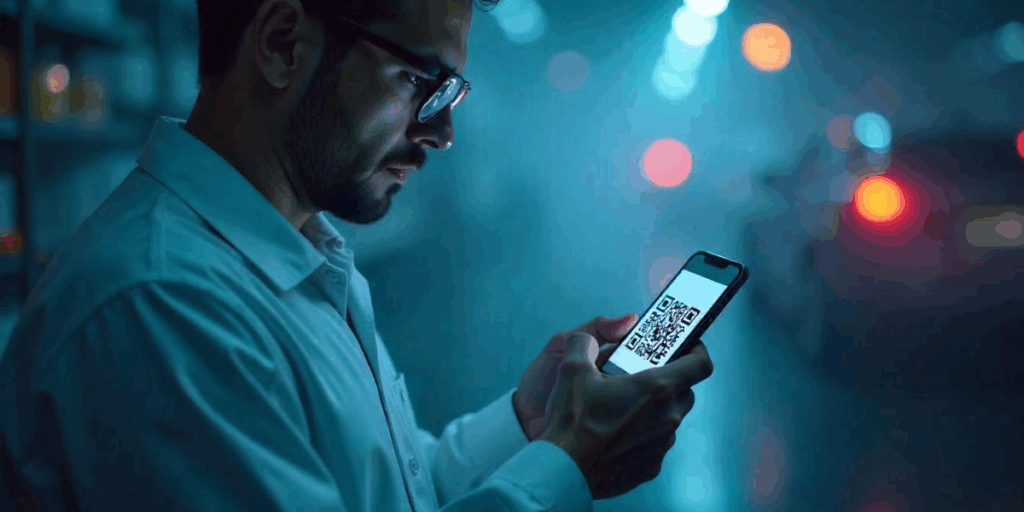
Not all QR Code generators are created equal. Some free or lesser-known tools may compromise your data or security. Here’s how to identify and avoid risky platforms:
1. Check for HTTPS in the URL (SSL Certificate)
Always look for “https://” at the beginning of the website address. This means the site is encrypted and your data is secure. If it only says “http://” (without the “s”), it’s a sign the site may not protect your information—avoid it.
2. Look for company details and transparency
Reliable tools typically mention who owns the tool, provide a physical address, offer contact info, and share a privacy policy. If a site hides this information or looks anonymous, it might not be trustworthy.
3. Avoid sites cluttered with ads and pop-ups
Excessive advertising, pop-ups, and redirect behavior can be a sign of a low-quality or even malicious platform. These sites might try to trick users into clicking unsafe links or downloading malware.
4. Be cautious of forced or auto-triggered downloads
A good QR Code generator should let you choose when and what to download. If a file starts downloading automatically right after generating a code, or if the site demands you install software, it’s best to close the tab immediately.
5. Never share unnecessary personal information
Creating a QR Code doesn’t require sensitive details like your phone number, address, or financial information. If a tool asks for this without a reason, it’s likely trying to misuse your data.
6. Check for a clear privacy policy or terms of use
If the site doesn’t explain how your data is stored, shared, or protected, that’s a major red flag. Legitimate services will always include a privacy policy at the bottom of their site.
7. Search for genuine user reviews or ratings
Look up the tool’s name on platforms like G2, Capterra, Trustpilot, or Chrome Web Store (for extensions). If no reviews exist—or worse, all reviews sound generic—it could be a fake or untested tool.
8. Avoid suspicious or lookalike domain names
Be wary of websites with strange spellings or slight misspellings of popular tools (e.g., qrcod-gen.com or scaneva.io instead of Scanova.io). These are often phishing sites set up to mimic well-known brands.
E. How Scanova ensures QR Code security and privacy?

In an era where data privacy and cybersecurity are top concerns, Scanova stands out by offering a QR Code platform that is designed from the ground up with safety, compliance, and control in mind. Here’s how Scanova safeguards your data and QR Code usage:
1. HTTPS-secured URLs for all generated QR Codes
Every QR Code you create with Scanova redirects to an HTTPS (SSL-secured) URL. This means all data transfers are encrypted, making it nearly impossible for hackers to intercept or spoof redirection paths. It’s the first step in ensuring safe end-user experiences.
2. Enterprise-grade cloud infrastructure with encryption protocols
Scanova is hosted on secure cloud platforms like AWS, ensuring robust firewalls, encrypted databases (both in transit and at rest), and intrusion detection systems. This prevents unauthorized access to user-generated content or analytics data.
3. Minimal data collection and short retention windows
Scanova practices data minimization—only essential information is collected, and it’s retained for the shortest period required. Personal data is never sold or shared with third parties, ensuring full control over your information.
4. Built-in GDPR and international data compliance
The platform is fully aligned with the General Data Protection Regulation (GDPR) and similar global standards. This includes support for data subject rights like access, rectification, erasure (right to be forgotten), and consent-based data handling—ideal for companies operating in the EU or other regulated markets.
5. Access-controlled dashboards with multi-user roles
Scanova provides secure login systems with multi-user access controls. You can assign different permissions (Admin, Editor, Viewer, etc.) to team members, ensuring no unauthorized user can make changes or access sensitive campaign data.
6. Editable dynamic QR Codes with secure content redirection
Dynamic QR Codes allow content to be updated even after printing. Scanova protects this feature with password-protected login, user tracking, and logs of redirection history to ensure no unauthorized redirection takes place.
7. Granular scan analytics with anonymized data collection
Scanova’s analytics dashboard offers rich insights (e.g., location, device type, time of scan), but always in an aggregated, anonymized format. This allows businesses to track performance without infringing on user privacy.
8. Secure API integrations for developers and enterprise systems
For advanced use cases, Scanova provides REST APIs with secure authentication keys, IP whitelisting, and rate limiting. This ensures QR Code management can be automated without opening vulnerabilities.
9. Regular security audits and automatic platform updates
Scanova’s technical team actively monitors and updates the platform to address any vulnerabilities. Frequent security audits, penetration tests, and automated patching help keep the system compliant and resistant to emerging threats.
10. Custom domain (white-label) support with added HTTPS protection
Businesses using branded QR Code domains can still benefit from Scanova’s SSL security via white-labeled domains. HTTPS support is extended to custom URLs, ensuring consistent encryption across all touchpoints.
11. Optional password protection and scan limits
Scanova allows QR Code creators to add passwords to codes or set scan limits, providing an extra layer of control, ideal for time-sensitive campaigns or gated content.
I. Why do enterprise users need a secure QR Code Generator?

For large organizations, using just any QR Code tool isn’t enough. When sensitive data, brand trust, and regulatory compliance are on the line, enterprises need a platform that is built with security, scalability, and control at its core. Here’s why:
1. Handles sensitive and confidential data at scale
Enterprises frequently embed links to internal documents, private landing pages, payment portals, and confidential PDFs in QR Codes. Using an insecure tool puts this data at risk of interception, phishing, or misuse.
2. Prevents brand damage from malicious redirection
If a QR Code is hijacked or spoofed, users may be redirected to malicious sites, potentially leading to fraud or malware downloads. Such breaches can severely damage brand credibility and customer trust.
3. Supports strict internal governance and audit trails
Enterprises often require visibility into who created or edited a QR Code, when it was modified, and how it’s being used. A secure platform offers version control, audit logs, and usage history—critical for accountability and compliance audits.
4. Mitigates regulatory risks with GDPR and data compliance
Businesses operating in regions like the EU, California, or Singapore must comply with data privacy laws. Using a compliant QR Code generator helps avoid legal penalties and ensures responsible data handling aligned with regulations like GDPR, CCPA, and PDPA.
5. Enables role-based access for large teams
In enterprise environments, multiple departments or team members may manage QR campaigns. A secure platform lets admins assign user roles (e.g., Editor, Viewer, Manager) to prevent unauthorized access and accidental edits.
6. Secures dynamic QR Code redirections
Enterprises rely on dynamic QR Codes that can be updated without reprinting. If left unsecured, malicious actors could change the redirection to unsafe destinations. A secure tool ensures that only authorized users can modify live campaigns.
7. Offers analytics without compromising user privacy
Marketing and operations teams need to scan data for performance tracking, but without risking personally identifiable information (PII). A secure QR Code platform offers anonymized, aggregated analytics to balance insights with privacy.
8. Protects campaign ROI with uptime monitoring and alerts
Enterprises running national or global campaigns need assurance that QR Codes will work 24/7. A secure platform offers infrastructure reliability, downtime alerts, and redundancy mechanisms to avoid costly disruptions.
9. Integrates safely with enterprise software ecosystems
Many businesses connect QR workflows with CRMs, ERPs, or marketing automation tools. A secure generator with encrypted APIs and access tokens ensures smooth integration without opening backdoors to internal systems.
10. Defends against insider threats and account misuse
With centralized dashboards and permissions, secure QR platforms reduce the risk of disgruntled employees or external contractors misusing brand assets or campaign data.
That’s it. That is all you need to know about a safe QR Code generator. To put your mind at ease, a lot of marketers are already using QR Codes in their campaigns. So, get started today and add QR Codes to boost your campaign success.
